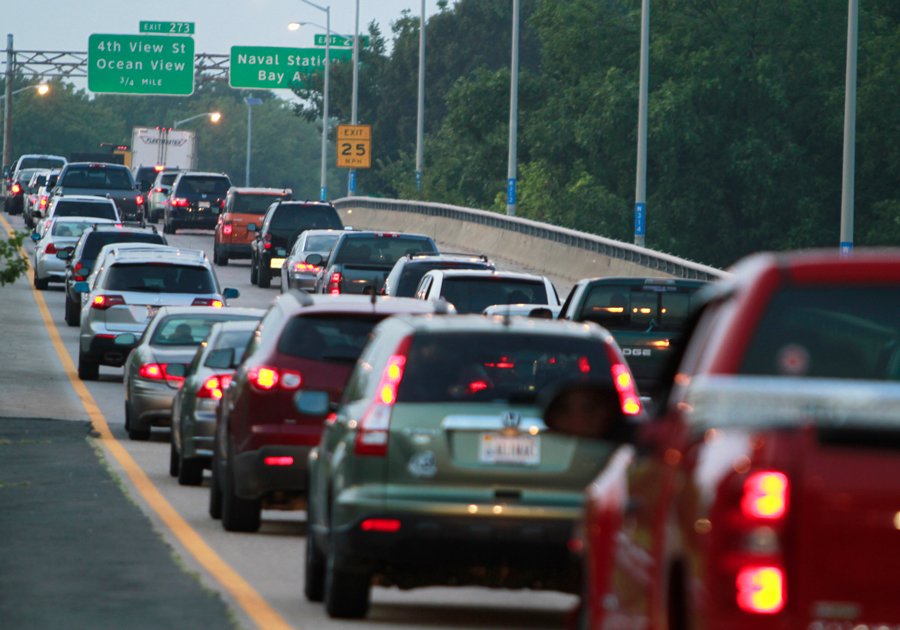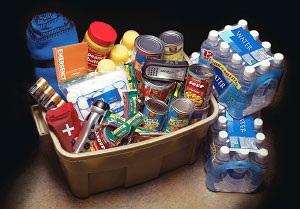Evacuation Preparation

Preparing for a hurricane requires a range of efforts on behalf of coastal residents to protect their homes and assets. However, boarding up windows and securing belongings may not be the last of locals’ troubles. When state or city officials deem an area unsafe for a future hurricane, an evacuation may be ordered to ensure safety.
Evacuations are a last resort to protect inhabitants from the devastating effects of hurricanes in the event that homes and buildings cannot be guaranteed as a reliable shelter against these natural forces. Whether mandated or voluntary, hurricane evacuation processes can be stressful and frustrating. Make your evacuation as easy as 1-2-3 with these crucial steps.
Step 1: Prepare A Kit
A hurricane evacuation can occur at any time during the hurricane season. Be sure to have an evacuation kit ready at all times so that you may be prepared for a safe evacuation. You kit should consist of:
- non-perishable food items, several bottles of water (per person), and extra water for any pets
- a flashlight, radio, extra sets of batteries and matches/a lighter
- street maps of the city and state
- a first aid kit
- a change of clothing and sleeping gear (for each person)
- toiletry items, paper towels and toilet paper as well as containers for urinating
- road flares, booster cables, a swiss army knife, a signal mirror and rope in case you are stranded
 Some items may need to be packed directly before the trip. Other items to remember to bring in addition to the evacuation kit include:
Some items may need to be packed directly before the trip. Other items to remember to bring in addition to the evacuation kit include:
- any prescribed medications or medical equipment
- any supplementary items which may be needed by infants or elderly evacuees
- fully charged cell phones and car phone-charging devices
- extra cash
Step 2: Secure Your Home
Although you won’t be facing the destructive forces of the hurricane, your home will. Residents should bring in or secure all out-door furniture or belongings to prevent displacement of these items. Board up and seal windows with plywood and place long pieces of masking tape on windows to prevent shattering. Bring inside any pets or animals you may have. In addition, residents should cut off all electricity and gas sources. Turn off water and disconnect appliances to avoid electric shock. These steps should be taken in advance before leaving your home to reduce the risk of damage.
Step 3: Quick Evacuation
If emergency officials have mandated an evacuation or you have decided to leave the area for safety, be sure to do so as soon as possible. In hurricane evacuation, time is of the essence. A few things to consider for you evacuation trip include:
- Gas: If there is a possible evacuation in your area, fill up your gas tank immediately. This will ensure that at the onset of an evacuation, you may leave quickly. This also helps to avoid running out of gas en route of the evacuation.
- Pets: Evacuees who will be bringing pets with them should take into consideration the necessities of animals. Bring extra food and water for pets. Keep in mind that pets will need an area to urinate or defecate. Bring along cat litter, cleaning supplies, and odor eliminating products. Evacuees should also know that due to sanitation concerns, most shelters do not allow pets.
- Duration of the trip: Expect heavy traffic and backups that will result in a lengthy evacuation. Plan for a long-hour trip by bringing plenty of food and water, and some sort of entertainment for any children passengers. Be sure to use the bathroom before leaving your house; it’s going to be a long ride!
Although evacuation may never be a completely stress-free process, by following this guide you can avoid practically any mishaps that may occur. This hurricane season be prepared for anything that may come your way. Read more about hurricanes preparation at national-hurricane-center.org.

Recent Comments